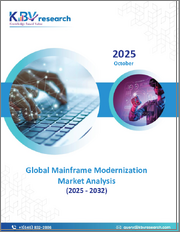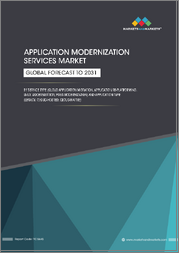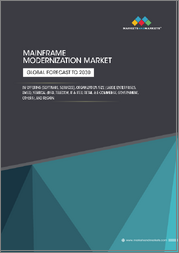
|
시장보고서
상품코드
1691045
현대화 시 아키텍처 원칙을 적용하여 중요한 애플리케이션에 대한 복원력을 구축When Modernizing, Apply Architectural Principles to Build Resiliency for Critical Applications |
||||||
IDC Perspective는 비용과 성능의 균형을 유지하면서 기술 투자를 비즈니스 목표에 맞춰 탄력적인 IT 환경을 설계하는 CIO를 위한 포괄적인 로드맵을 제공합니다. 현대 디지털 시대에 회복탄력성은 효과적인 IT 전략의 초석이 되었습니다. 조직은 복잡성 증가, 사이버 위협, 진화하는 비즈니스 요구 등 산적한 과제에 직면해 있으며, 복원력의 핵심은 관리 가능하고 복원력이 있으며 지속 가능한 시스템을 구축하는 것이 중요하다는 것입니다. 퍼블릭 클라우드 제공업체에서 영감을 얻어 표준화 및 단순화를 위해 노력하고, 복잡성을 줄이면서 유지보수성을 개선하기 위해 잘 설계된 제한된 솔루션 세트와 실버, 골드, 플래티넘 등 계층화된 호스팅 접근 방식은 애플리케이션 중요도와 복원력 요건을 일치시키는 실용적인 모델로 도입되었습니다. 이러한 계층은 조직이 중요하지 않은 부서 시스템부터 실시간 거래 및 핵심 뱅킹과 같은 미션 크리티컬 플랫폼에 이르기까지 다양한 비즈니스 요구 사항을 충족하도록 리소스를 할당하고 시스템을 설계할 수 있도록 안내합니다. 각 계층은 복구 시간 목표(RTO), 복구 지점 목표(RPO), 복제 전략, 장애 조치 메커니즘과 같은 주요 고려 사항을 강조하며, 하이브리드 또는 온프레미스 환경을 관리하는 CIO에게는 자동화, 모듈식 아키텍처, 코드형 인프라(IaC)와 같은 퍼블릭 클라우드와 유사한 사례를 에뮬레이션하는 것이 중요하다는 점을 강조합니다. 이러한 전략을 통해 반복 가능하고 신뢰할 수 있는 인프라스트럭처를 구축하여 오류를 줄이고 민첩성을 높일 수 있습니다.주요 내용은 복원력 있는 IT 환경에 중요한 5가지 원칙에 중점을 둡니다.표준화 및 단순화를 통한 복잡성 감소효율성과 민첩성을 위한 클라우드 수준의 자동화 도입비즈니스 요구에 따라 시스템이 성장할 수 있도록 확장성 구축 간소화된 워크플로 및 DevOps 관행을 통한 개발자 경험 향상 고급 기능과 강력한 관리로 보안 우선순위 지정이런 원칙에 따라 CIO는 현재의 과제와 미래의 요구에 적응 가능한 IT 환경을 설계할 수 있습니다. 잘 설계된 IT 인프라스트럭처는 단순한 지원 기능을 넘어 조직의 회복탄력성과 혁신을 지원하는 전략적 원동력으로 진화합니다. IDC의 IT 임원 프로그램(IEP) 부연구 고문인 제럴드 존스턴은 "회복탄력성은 단순한 목표가 아니라 오늘날의 까다로운 디지털 경제에서 경쟁 우위입니다"라고 적절하게 설명합니다.
주요 요약
상황 개요
- 클라우드 컴퓨팅이 매력적인 이유
- 보안의 관점
기술 구매자를 위한 조언
- 온프레미스 및 프라이빗 클라우드 호스팅에 설계 원칙 적용하기
- 아키텍처의 원칙과 고려사항
- 호스팅 및 컴퓨팅
- 애플리케이션
- 스토리지
- 네트워크
- 운영 모델
- 실례
참고자료
- 관련 조사
- 요약
This IDC Perspective provides a comprehensive road map for CIOs to architect resilient IT environments by aligning technology investments with business goals while balancing cost and performance. In the modern digital era, resilience has become a cornerstone of effective IT strategy. Organizations face mounting challenges such as increasing complexity, cyberthreats, and evolving business demands.A key to resiliency is the importance of building systems that are manageable, resilient, and sustainable. Drawing inspiration from public cloud providers, strive for standardization and simplicity, as well as a limited set of well-architected solutions to reduce complexity while improving maintainability.A tiered hosting approach - silver, gold, and platinum - is introduced as a practical model to align application criticality with resilience requirements. These tiers guide organizations in allocating resources and designing systems to meet diverse business needs, from noncritical departmental systems to mission-critical platforms like real-time trading and core banking. Each tier emphasizes key considerations such as recovery time objectives (RTOs), recovery point objectives (RPOs), replication strategies, and failover mechanisms.For CIOs managing hybrid or on-premises environments, the importance of emulating public cloudlike practices - such as automation, modular architectures, and infrastructure as code (IaC) - is underscored. These strategies enable repeatable, reliable infrastructure deployments that reduce errors and foster agility.Key takeaways focus on five principles critical to resilient IT environments:Standardization and simplification to reduce complexityAdopting cloudlike automation for efficiency and agilityBuilding for scalability to ensure systems can grow with business needsEnhancing developer experience through streamlined workflows and DevOps practicesPrioritizing security with advanced features and robust governanceBy following these principles, CIOs can design IT environments that are adaptable to current challenges and future demands. A well-architected IT infrastructure becomes more than a support function - it evolves into a strategic enabler of organizational resilience and innovation.As Gerald Johnston, adjunct research advisor, IDC's IT Executive Programs (IEP), aptly states, "Resiliency is not just a goal; it is a competitive advantage in today's demanding digital economy."
Executive Snapshot
Situation Overview
- Why Is Cloud Computing Attractive?
- The Security Perspective
Advice for the Technology Buyer
- Apply Design Principles to On-Premises and Private Cloud Hosting
- Architectural Principles and Considerations
- Hosting and Compute
- Applications
- Storage
- Network
- Operating Model
- Practical Example
Learn More
- Related Research
- Synopsis

















